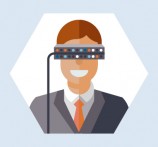 1. Virtual reality
1. Virtual reality
Microsoft and Volvo are joining forces to offer virtual reality car tours. Microsoft’s HoloLens will let consumers “see” hidden car features, such as crash bars, change the colour of the car and even go on VR test drives. HoloLens is a pretty jaw-dropping technology. It’s a headset which overlays reality with solid looking holograms. Instead of creating, say, a gearbox on a computer screen in computer-aided design, you can see the fully formed object sitting on a table in front of you. With HoloLens you can “see” a video-conferencing screen on a wall and move it with a gesture. HoloLens will be given to developers in early-2016. It will change architecture, engineering and medicine forever. Naturally Google is funding a rival, a startup called Magic Leap. HTC and Sony have VR sets coming too.
 2. Big data
2. Big data
Famously baffling, big data is now starting to demonstrate its worth in businesses of all sizes. In essence, data scientists look for patterns in pools of data too large for humans to sift through manually. For example, supermarkets use big data to work out how many courgettes to order each day based on sales, cross-selling and dozens of other metrics. Two things are promoting big data. The first is that companies are waking up to the fact they don’t need to be geniuses to use it. Consultancies such as eCommera or Blue Yonder do the hard work and tweak the algorithms for clients. Second is the prevalence of use-cases. Lufthansa uses big data to estimate the number of no-shows per flight. Each flight gets its own calculation based on multiple variables including booking demographics. This shapes the overbooking policy. With 80 million passengers a year using Lufthansa, it’s the only way to produce accurate forecasts for each and every flight.
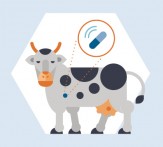 3. Internet of things
3. Internet of things
Yes, there’s mockery. Do we really need internet connected kettles, toasters and belts (made by Emiota, it tracks your waistline)? Maybe not. But the internet of things is just getting started. Pretty much everything will be connected to the internet. Even cows. In any given year, 40 per cent of cows get ill and 8 per cent die. Sunburn and stomach acidosis are common. The solution? VitalHerd is a US startup making a pill swallowed by the cow to transmit health data to the farmer. Sensors capture heart rate, respiration, rumen contraction, core temperature and pH. Next up humans.
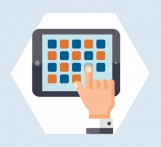 4. Applification
4. Applification
If you have a few silver streaks in your hair, you may remember PCs from the 1980s. They were pretty awful to use. Typing stuff like *dir in a command terminal to move directory… yuk. Today? Toddlers can use iPads. Everything is getting easier to use. This trend is vital in business. Interfaces are getting simpler. The Department for Business, Innovation & Skills improved the performance of accountants by introducing intuitive dashboards, stripping out extraneous data. The new F35 fighter jet massively reduces pilot information to improve concentration. Simpler user interfaces take less time to learn, are more fun to use and enjoy wider adoption. Everything should be as easy to use as a mobile app, hence “applification”.
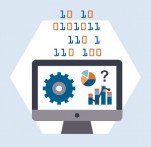 5. Open source
5. Open source
Did you know Android is open source? You can go online to Android Open Source Project and make your own version. The Firefox browser is open source. The Linux operating system is used by 485 of the top 500 supercomputers and around 65 per cent of the active web server market. As a desktop operating system, Linux struggles, hence the lack of common awareness of the triumph of open source. But from tiny devices through to warships, Linux is becoming the default operating system. Why? Cost. Security. Familiarity. And software developed with the help of a vast open source community.
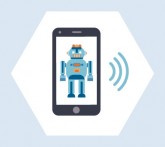 6. Chatbots
6. Chatbots
This tech went from silly to serious in about a year. Siri hit the iPhone and suddenly it became normal to ask a telephone to tell you the weather or set an alarm. The IBM’s Watson beat the top competitors on the quiz show Jeopardy. Microsoft integrated Cortana into Windows 10. Gartner predicts by 2017 the cost of managed services will fall 60 per cent due to chatbot services. The goal is to create superintelligent assistants who can converse in complex and unstructured formats, and then take action. A great illustration is the film Her featuring Scarlett Johansson as a chatbot so real she doubles up as a romantic partner. Futurist and Google head of research Ray Kurzweil forecasts the arrival of virtual “ScarJos” in 2029.
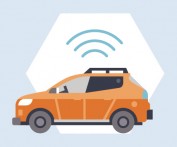 7. Driverless cars
7. Driverless cars
The implication of driverless cars isn’t obvious. At first we’ll go to the pub, drink and zoom back again while over the limit. But then what? Actually, driverless cars are going to be a very, very big deal. Commuters can sleep in vehicles, arriving at work on time. Driverless cars may dock together for efficiency. They may render high-speed rail obsolete. Retail, holidays, logistics and city planning will all change when the first driverless cars arrive.
 8. Hacking
8. Hacking
“In a few years there’ll be enough computers in your home that getting hacked and being haunted will be functionally indistinguishable.” This comment by a Twitter comedian is eerily prescient. A user of the Philips app-controlled lightbulb reported plunging her tenants in San Francisco into darkness from Wales with a clumsy click. Hackers pose a more serious threat. A report by HP says 70 per cent of connected devices contain “serious vulnerabilities”. We’ve already had smart TVs which listen to keywords in users’ conversations and sell the data to advertisers. If security is not increased, the application of technology in the home and workplace will be seriously diminished. The time for taking this issue seriously is long overdue.
